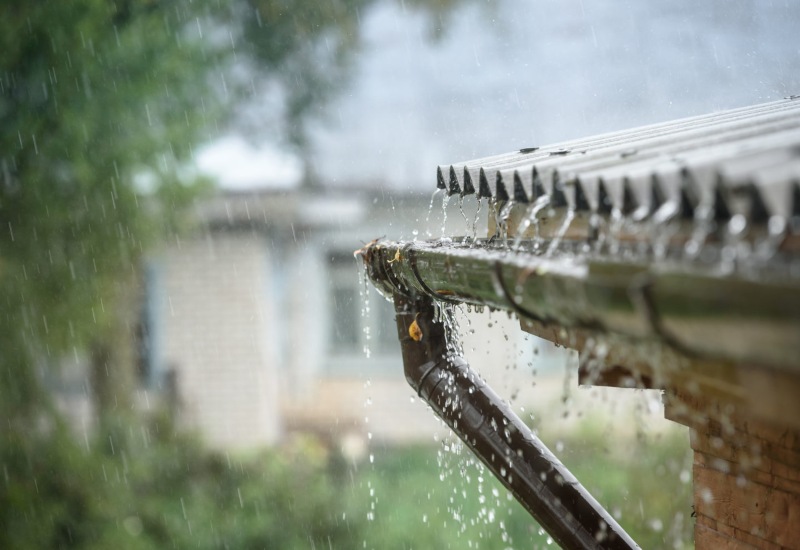Preventing Spring Basement Leaks in the Rainy Season
 April showers may bring May flowers, but the heavy rains of spring can also bring water into your basement. It’s a common problem, especially when the rain is combined with thawing snow. Even when the rain is light, though, it can make its way into your basement. What can you do to prevent this? By following a few guidelines you’ll be able to keep your basement dry.
April showers may bring May flowers, but the heavy rains of spring can also bring water into your basement. It’s a common problem, especially when the rain is combined with thawing snow. Even when the rain is light, though, it can make its way into your basement. What can you do to prevent this? By following a few guidelines you’ll be able to keep your basement dry.
- First, understand why basement flooding happens. When melting snow and rainy conditions cause extra water to puddle in your gutters and yard, this excess water can get into your house through weak spots in your foundation. What’s more, soil saturation can create hydrostatic pressure that forces water through the basement walls and floor, and loose soil around your foundation can absorb water. Your window wells can also fill with rainwater, allowing it to seep into your basement.
- Next, inspect your downspouts and sump pump drainage lines. Snow often piles on top of downspouts, and that can keep water from draining. When you clear the snow from your downspouts, you’ll allow your gutters to work as they’re meant to, redirecting water away from your foundation. Similarly, above ground sump pump drainage lines can freeze and prevent water from leaving the discharge lines. When the water in the sump pump can’t escape, your sump pump will run constantly and burn out. If your sump pump is running non-stop and feels warm, you’ve probably got trouble with your drainage. Check the outside drainage or discharge line to make sure water is draining and look inside the pump for ice buildup. A frozen discharge line is likely to mean water in your basement.
- Make it easy for water to drain away from your foundation. Create paths for proper drainage, so that the soil around your basement does not become saturated with water. If it does, it will create hydrostatic pressure and send water into your basement via the path of least resistance. Porous concrete foundation walls, form ties on poured foundation walls, cracks in the foundation walls, and the joint where the foundation wall and footing meet all fit the bill as least resistant paths.
- Shovel any snow away from your siding. If you allow snow to build up against your siding, it can seep under the siding and make its way into the basement.
- Check your basement for weaknesses. Make sure your sump pump and basement waterproofing system are working properly and check the foundation walls for cracks or weak spots. Inspect the window wells, vents, and exterior openings, and make sure they’re properly sealed.
- Get a professional inspection. It may be necessary to install a basement waterproofing system or upgrade the one you have, but even if it isn’t, it’s smart to have someone look your basement over and make sure you didn’t miss anything when you were checking for flaws.
If your basement has already flooded, you’ve got a different set of guidelines to follow.
- Contact your city’s water department. They’ll be able to tell you about the condition of the main sewer line to your home.
- Wear protective gear. Even if it’s just melting snow and rain seeping into your basement, it can cause sewer lines to back up and bring contaminants into your home. Protect yourself before you head into the basement, wearing eye protection, gloves, and boots. Be careful not to track floodwater into the rest of your house, and keep children and pets out of flooded areas.
- Stay out of harm’s way. In addition to wearing protective gear, you should avoid entering any rooms in which the ceilings are sagging. Don’t touch or use electrical items that are plugged in or use appliances near water. Don’t use heat to dry your flooded interiors.
- Clean up the water. Mop and dry the area, and use a solution of eight tablespoons of liquid chlorine bleach to one gallon of water to disinfect any surfaces that have come into contact with the floodwater.
- Get rid of anything that’s sustained damage. Don’t take a chance on keeping items that may be contaminated or toxic, but take photographs of everything that’s been ruined to submit to your insurance company. Keep mold at bay by removing damaged drywall within the first 24 hours after the flood occurs.
- Call in the professionals. Waterproofing experts can help you determine the work that still needs to be done, the preventive measures you’ll need to take, and how you can protect your basement against future flooding. You may need to install a waterproofing system to keep rainwater out of your basement by minimizing hydrostatic pressure with an interior drainage system, connected to a sump pump that will carry out any water that leaks into the basement.
You might notice that the one thing both lists have in common is the need for professional assistance. Whether you’re trying to keep your basement dry or restore it after a flood, it’s important to know who to call for help. At Budget Waterproofing, we’ve got more than 55 years of experience servicing both commercial and residential customers throughout Maryland. We’re proud of our craftsmanship and confidence in our skills, and all of our technicians are fully licensed and insured. Whether you need basement waterproofing, a drainage system, crawl space waterproofing, or egress window installation, we’ve got you covered, with the experience and skills necessary to improve your basement and protect your family. For more information, contact us today!
